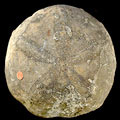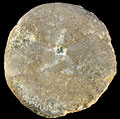The Echinoid Directory
Dactyloclypeus Maccagno, 1947, p. 126
| Diagnostic Features |
|
|---|---|
| Distribution | Middle Jurassic (Bathonian - Callovian) of Somalia. |
| Name gender | masculine |
| Type | Clypeus wylliei Currie, 1925, p. 63; type species by subsequent designation of kier, 1962, p.37. |
| Species Included |
|
| Classification and/or Status |
|
| Remarks |
|




